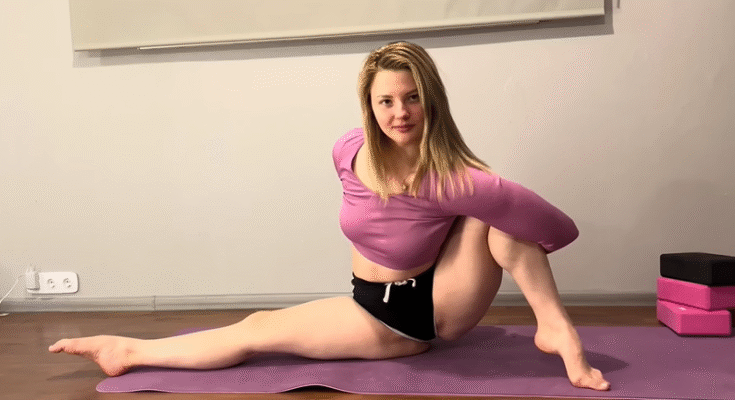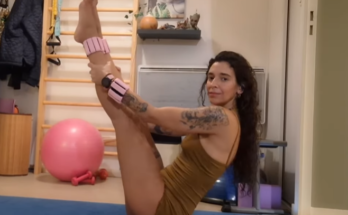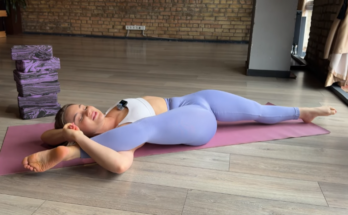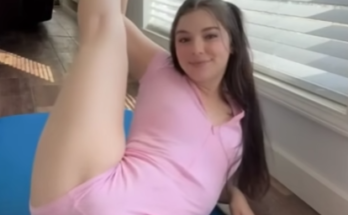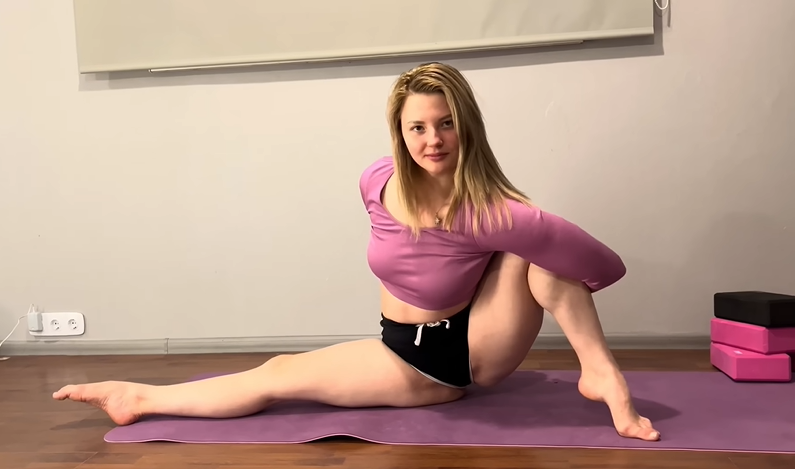
Flexibility is more than just a physical ability — it’s an art form. Whether you’re a gymnast, dancer, contortionist, or yoga enthusiast, the mastery of splits and oversplits is a symbol of dedication, discipline, and grace. Achieving this level of flexibility doesn’t come overnight, but with consistent training, mindful stretching, and proper recovery, your body can transform into a masterpiece of strength and control.
This guide will take you step-by-step through the science, techniques, and mindset needed to reach perfect leg flexibility, achieve beautiful splits, and even explore the advanced challenge of oversplits — safely and effectively.
So roll out your mat, find a quiet space, and let’s begin the journey toward flexibility mastery. 🌿
🌸 1. Understanding Flexibility in Gymnastics and Contortion
In gymnastics and contortion, leg flexibility plays a crucial role in performance. It allows for greater range of motion, more fluid movement, and beautiful lines during routines.
There are three key types of flexibility to develop:
- Dynamic Flexibility: The ability to move muscles through their full range of motion (like high kicks or leaps).
- Static Flexibility: The ability to hold a stretched position, such as a split, without movement.
- Active Flexibility: The ability to lift and hold your leg high using only your muscles (no hands for support).
Each type supports the others. The more balanced your flexibility training, the safer and more powerful your movements will become.
But before diving into deep stretches, we must start with something essential — the warm-up.
🔥 2. Warm-Up: Preparing the Muscles
Never stretch cold muscles. Warming up is key to preventing injuries and improving results.
Spend 5–10 minutes getting your blood flowing:
- Jog or jump in place to raise your heart rate.
- Do high knees, butt kicks, or jumping jacks.
- Add dynamic stretches: leg swings, arm circles, and gentle lunges.
Dynamic warm-ups help increase elasticity in the muscles and prepare your joints for deeper movement. You should feel warm but not exhausted before beginning your deep stretches.
🧘♀️ 3. Deep Hamstring and Hip Stretches for Splits
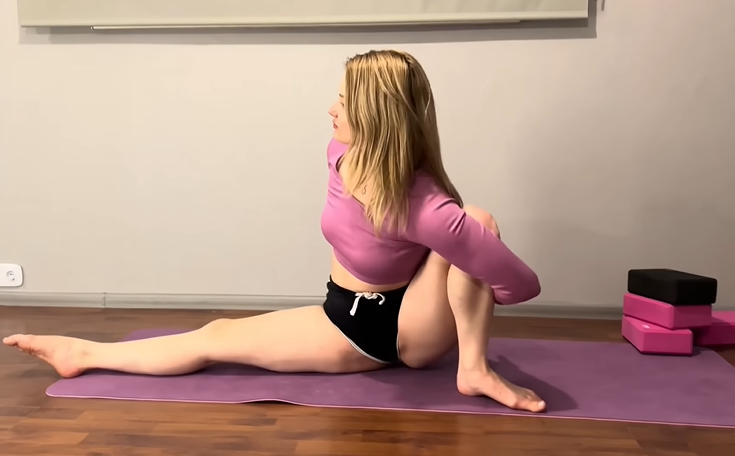
Now that your body is warm, it’s time to target the specific muscle groups used for splits and oversplits — mainly the hamstrings, hip flexors, and quadriceps.
🦵 a. Forward Fold (Seated or Standing)
Sit with both legs straight in front of you. Inhale, lengthen your spine, and exhale as you fold forward. Keep your back flat as you reach toward your toes.
This stretch lengthens the hamstrings — crucial for front and side splits. Hold for 30–60 seconds, breathing deeply.
🧍♀️ b. Lunge Stretch
Step your right foot forward, keeping your left leg extended behind you with the knee on the floor. Sink your hips gently toward the mat.
You’ll feel the stretch in your hip flexor — the muscle that often limits your split depth. Hold for 45 seconds per side.
🧘♀️ c. Half Split (Ardha Hanumanasana)
From your lunge, shift your hips back and straighten your front leg, flexing the foot. Keep your spine long and chest forward.
This targets both your hamstrings and calves. It’s a great preparation for full splits.
Repeat these stretches 2–3 times per side.
🌈 4. Mastering the Front Splits (Hanumanasana)
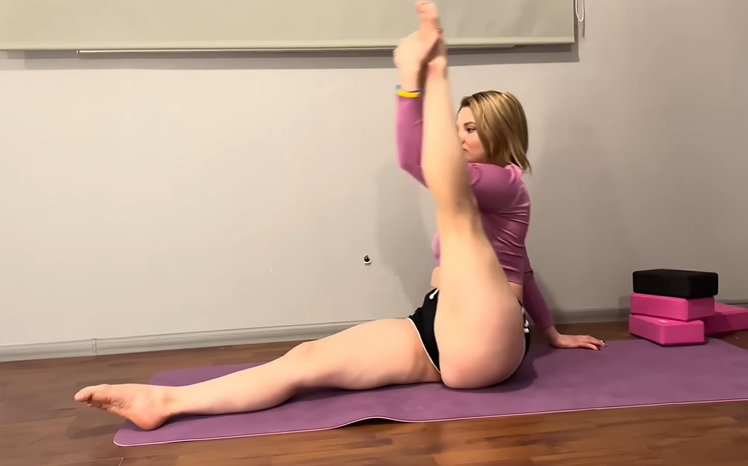
Now we approach the main goal: the front split.
- Begin in a low lunge with your back knee on the floor.
- Slowly slide your front heel forward and your back knee backward.
- Keep your hips squared forward — this is vital for proper alignment.
- Use yoga blocks under your hands for balance and support.
Take deep breaths. As you exhale, let gravity help you sink a little deeper.
If you can’t reach the floor, that’s okay. Even experienced athletes worked their way there slowly. What matters is consistency.
Hold your split for 30–60 seconds per side, and come out of it gently.
Over time, your muscles will adapt — stretching is about persistence, not pain.
🦋 5. Side Splits (Middle Splits / Straddle Splits)
The middle split, also known as the straddle split, requires open inner thighs and hip flexibility.
Start by sitting in a wide-legged position on the floor. Keep your toes and knees pointing up toward the ceiling.
Place your hands in front of you and walk them forward slowly, keeping your back straight. When you feel a deep stretch in your inner thighs (adductors), pause and breathe.
Hold this position for 45 seconds to 1 minute.
With time, your hips will drop closer to the ground. Don’t rush — forcing this stretch can cause groin injuries. Focus on slow progress and correct alignment.
💫 6. Oversplits: The Next Level
Once you’ve mastered regular splits, you may want to challenge yourself with oversplits — where one leg extends beyond 180 degrees, often elevated on a yoga block or cushion.
How to train for oversplits safely:
- Start by placing your front foot on a small block or folded pillow.
- Slide into your split as usual, keeping your hips square.
- Breathe deeply and hold for 20–30 seconds.
Never force your body. Oversplits require advanced flexibility and strong supporting muscles. Gradually increase height over time as your flexibility improves.
Remember — the goal isn’t just to “get lower,” but to maintain control and alignment throughout the movement.
🩰 7. Active Flexibility: Building Strength for Control
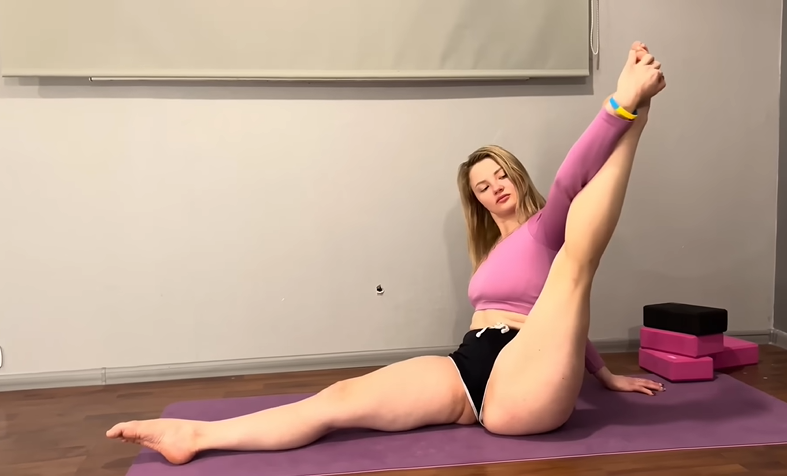
True flexibility in gymnastics and contortion isn’t just about being bendy — it’s about strength in every position.
To build active flexibility, practice these exercises:
- Leg lifts: Sit tall and lift your straight leg up and down using your thigh muscles.
- Standing kicks: Controlled front, side, and back kicks — focusing on height and control.
- Wall holds: Stand near a wall and lift one leg up to your split height, holding it there for 10–15 seconds.
Active flexibility gives you the power to lift, hold, and move gracefully — without depending on your hands for support.
🌺 8. Cool Down & Recovery
After deep stretching, always take time to cool down and relax your muscles.
Lay down on your mat in Savasana (Corpse Pose) or gently hug your knees into your chest. Breathe deeply and allow your muscles to release tension.
You can also use a foam roller or massage ball to reduce soreness and improve blood circulation.
Hydrate well and rest — flexibility improves most during recovery, not while stretching.
🧠 9. Tips for Faster Progress
- Stretch daily. Even 15–20 minutes a day makes a difference.
- Warm up first. Never stretch cold muscles.
- Breathe deeply. Relax into every stretch.
- Focus on alignment. Proper form prevents injuries.
- Don’t compare yourself. Every body is unique.
- Track your progress. Take weekly photos or notes.
- Listen to your body. Sharp pain is a red flag — stop immediately.
Flexibility is a journey — some days you’ll feel open and fluid, others more tight and restricted. Stay patient. Progress is never linear, but it’s always happening.
🌟 10. The Mindset of a Flexible Body
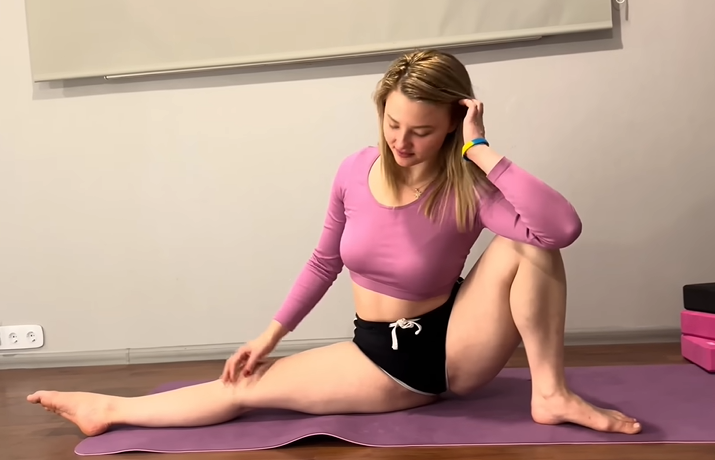
Gymnastics and contortion aren’t just physical practices — they’re mental ones. The same patience, discipline, and grace you develop while stretching also build your inner strength.
When you stretch, you learn trust — trusting your body to adapt, your breath to guide you, and your mind to stay calm in discomfort.
It’s not just about touching the floor — it’s about discovering your potential.
Every stretch is a conversation between your body and your willpower.
🌙 Conclusion
Flexibility is a lifelong art. The splits and oversplits symbolize not just physical openness, but also emotional and mental expansion.
With consistent training, mindful breathing, and patience, you’ll soon find yourself gliding into positions you once thought impossible — not from force, but from flow.
So keep stretching, stay gentle with yourself, and remember: every breath, every reach, every inch closer is a victory worth celebrating.
You are stronger, softer, and more capable than you realize. 🌿🩰💖
Leg Flexibility. Splits and Oversplits / Gymnastics and Contortion — your path to grace, control, and the limitless beauty of movement.
